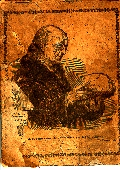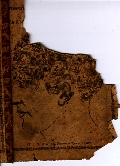


...mprovement . . .1 00...Vol.I devoted to Physiology,
..l and moral laws of man's nature
...ovement: the moral training and
...ren; and the perfection of charac-
...effective, and diminishing excessive
...II.-Analyses the Intellectual Organs,
...to cultivate them; improve the mem-
...children; and discipline the mind
....of this work will be found to unfold some
...le of human nature, or to point out some
..aw of virtue and happiness.]
...reditary Descent: its Laws and Facts . . 75
[Facts on this subject are intensely interesting, and high-
ly instructive. To produce its richest harvest, human
improvement must commence with the GERM. Here
has been the fatal error! This whole subject-(the
relations of parents to their children-the transmis-
sin of qualities, physical, intellectual, and moral, from
parents to children, and its application to the improve-
ment of progeny)-is fully treated in this work.]
Phrenology applied to Matrimony, . . .25
[Including directions for choosing congenial companions
for life. With hints to the married.]
Religion, Natural and Revealed, . . .50
[Or, the natural theory and moral bearing of Phrenolo-
...A comparison of the religion of the Bible with
..ural religion.]
...r, on Memory . . . . .25
...phrenology applied to the cultivation of the memory...
-the intellectual education of the children-and the...
strengthening and expanding of the intellectual powers.
...nology and Physiology,
.......ogically. With cuts.]
....2
... 2...
Combe's Physiology, 8 vo. with notes and observa
-tions, by O.S. Fowler,) . . . 75
[From the last Edinburgh edition. The most specific
and practical work, and the best adapted ot the general
reader of any work on the subject now extant.
The American Phrenological Journal, 6 vols . . . 11
The Phrenological and Physiological Almanacs, .
[This annual contains practical advice touching health-
Phrenological and physiological facts, &c. illustrated
with cuts. Also, back numbers for 1840-1-2-3-4-5,
containing much valuable phrenological matter. 6 1/4 c.]
Synopsis on Phrenology . . . . .
[A "multum in parvo" pamphlet, of which over 150,000
copies have been sold.]
The Phrenological Guide, . . . . .
Symbolical Head, and Phrenological Chart,..
[In which the faculties are represented by elegant and
forcible engravings.]
Phrenology Vindicated, . . . . . .15
[An answer to Dr. Frank H. Hamilton, in which the
proofs of the science are succinctly adduced. Illustra-
ted with cuts.]
Love and Parentage, (by O.S. Fowler,) . .25
[Applied to the improvement of offspring; including
much valuable information and suggestion to both sexes
and all ages; together with the evils and remedies of
excessive and perverted amativeness.
PHRENOLOGICAL HEADS marked, showing the
exact location of the organs . . . . . 1 00
VERBAL AND WRITTEN DELINEATIONS OF
CHARACTER likewise given. Examinations and
Chart, $1 00. Written description, . . .3 00
The Works of GALL, SPURZHEIM, and COMBE,
will also be furnished at the above Cabinet.
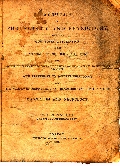
The scale for marking the relative strength and
activity of the different conditions of the body and
faculties of the mind, is from 1 to 7. Figure 1 in-
dictating very small; 2, small; 3, moderate; 4,
average ; 5, full; 6, large; 7, very large. In this
work, and in all our phrenological language, we use
these terms in a specific sense.
The sign + (plus or more) placed before or after
a figure, shows that it is larger than it is marked,,
yet not so large as to require the next larger figure:
the sign - (minus or less) that it is not quite as
much as is marked: this ( turned 90 degrees upward over a figure
signifies that it should be cultivated and increased
in activity and size: this ) turned 90 degrees
downward marked under a figure
...ifies that it is too large and active, and
should
be decreased and rendered less influential.
1. Very small, is used when an
organ is so small
that its function is seldom felt or exercised
in the
character; and though existent and active with
the
rest, it seldom influences them as a motive power,
or moves in any important action. It requires
great
motive to excite it efficiently, and long education
and discipline to make it serviceable.
2. Small, denoted a feeble yet
general activity;
too small to hold any command, and yet capable
of
good service, when directed and sustained by
the
other organs. It sometimes moves
ht rest to its
assistance.
3. Moderate. This term implies
a tone of func-
tion easily excited to effort, and seldom backward
in duty. Still it is not capable of command;
is only
awakened by motives from abroad to venture and
undertake operations on its own account.
It is
moderate in all things; if any thing, falls short
of,
rather than oversteps, its designs.
4. Average, is used to denote par,
or equal size
and action of an organ. It is the line
of equality,
from which the rest depart. The more organs
in
each head we mark average, the more symmetrical
that head is made; the more harmonious their
func-
tions; and consequently the more uniform will
be
the character of the individual. Average
is the size
from which all functions should be studies; it
ex-
presses neither deficiency nor redundance, but
plain,
useful, elementary, and harmonious activity.
It is
the term on which we have based all our first
defini-
tins of the several special faculties.
5. Full, expresses an energetic
organ; one that
has influence, but not authority, in the mental
coun-
cils; on which can urge, persuade, but not com-
mand, the will or understand. Yet several
full
organs in one region of the brain would, by concert
and combination, control the character to a great
degree.
6. Large, proclaims a powerful
function, one
which is capable of distinguished and self-directing
conduct. Several organs large, with a proper
tem-
perament, make talent, or ability to urge the
whole
mind up to great effort on specific subjects.
Large
organs generally act in combination to make char-
acter.
7. Very large. This term
is placed equi-distant
from average with very small, and is directly
opposite
to it in influence, while both are unnatural,
and
cannot be safely trusted in the character.
It ex-
presses a function which is liable to control
and
govern especially the smaller faculties, constituting
and giving tone and direction to the character
and
talents; easily excited, powerful in action,
and quite
liable to abuse or disease.
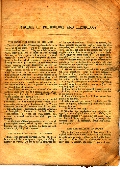
THE BRAIN THE ORGAN OF THE MIND.
The first principle of Phrenology is--the brain is
the organ of the mind. We do not discuss the na-
ture of mind and matter. they are subtle elements,
which show themselves in union, and we discover
them only as they are perceived by secondary mental
operations. that is--all our perceptions are subse-
quest to the thing which perceives. So, mind has
a being prior to its perceptions. these perceptions
cannot perceive beyond themselves--or see the
cause from which they come. We may infer by
reflective reason, as well as by consciousness, that
mind does exist; but its nature we cannot know.
This is true of matter also. It always appears to us
in combination; how, then, can we judge its nature?
But still the terms mind and matter express two
things, which we are sensible are different, and we
can never confound their properties, however we
may blend their phenomena.
Now all men, believe in the union of mind with
matter in some form, and to a certain extent. Phre-
nologists say, this union is with the brain. We
believe it from the following facts:
1. When there is no brain, there are no mental
phenomena. 2. The mental powers appear in the
exact ratio with cerebral development. 3. We are
conscious that mental operations occur in the brain.
4. When the brain is diseased, the mental phenomena
are deranged. 5. Pressure on the brain destroys
consciousness. 6. When the brain shrinks and
decays, the mental faculties lose their vigor and
strength.
For the truth of these propositions, we refer to all
phrenological works, written by men approved for
learning and honesty. Indeed, the facts are self-
evident to physiological observers.
THE BRAIN A PLURALITY OF ORGANS.
The second principle of Phrenology is-the brain
is not an unit, but a compound organ, containing a
plurality of organs, each on of which develops one
of the special faculties. Here let us us
remark, that
these separate organs are each of them one of
a
congeries; not independent of the others; but
are
developed and act like all the several congeries
of
organs, more or less in harmony, and correlatively.
They occupy the same relation to each other as
the
mental faculties; or, the brain has its organs,
as the
mind has its faculties. We judge and determine
the
plurality of the mental faculties, and their
individual
dependence on special organs of the brain, by
the
following among other rules:
1. We are conscious of opposite
feelings...
...tellectual operations: judge them from differences
in their qualities, in mode of development, history,
strength, duration; and the objects which call
them
into action, gratify them, and sink them to repose.
2. They are developed in the animal
kingdom in
exact harmony, (when all things are equal,) and
one
may be judged by the other.
3. They vary in the two sexes of
the same species.
4. They are not proportionate one
with another,
in the same individual.
5. They are propagated in a distinct
manner from
parents to children.
6. When certain portions of the
brain are dis-
eased or injured, corresponding fundamental facul-
ties are deranged.
7. They act or rest singly.
8. The last and satisfactory rule
to which we
appeal, is phrenological observation. Made,
1, in
the healthy subject, by examining the head; 2,
in
the diseased living subjects; 3, in comparative
anatomy; and 4, in pathology, throughout the
ani-
mal kingdom.
SIZE THE MEASURE OF POWER.
This is the third principles of Phrenology.
It is
applied to the absolute size of the brain as
a whole;
or to its parts as such. When applied to
the brain,
its size is judged from its relative size with
the
body, seen in infancy, childhood, youth, and
man-
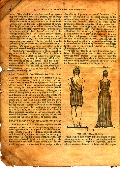
FIRST CLASS OF CONDITIONS TO THIS LAW.
In the formation of all bodies, certain
elements
enter them necessary to their structure and use.
This is true of man as a being, and of his body
in
all its parts. These elements are diffused
through
the tissues, and are endowed with vital properties,
such as attraction and repulsion. When
any one
class of these predominate, they give a specific
tone
and temper to all the rest, and affect the whole
sys-
tem on the principle of correlation. But
the ele-
ments are so subtle and minute, that they are
circu-
lated by both the vital energies and fluids alike
in
all the organs. Hence they rarely occur
predomi-
nant, but are generally combined in the proportion
of 4 to 2, 3 to 1, or 7 to 5, and the like.
Indeed,
their combinations occur in the same manner as
the
several functions of the cerebral organs; and
we have
chosen the same rule of figures to express them.
SECOND CLASS OF CONDITIONS TO THIS LAW
The harmony of the functions depends o
the
symmetry of the form. If one organ be too
large, it
takes up more than its proportion of the vital
ener-
gies; diverts to itself more than its share of
nutrition
and innervation, and thus deranges the harmony
of
the whole. For in the normal state, the
vital ener-
gies are universal, equal, and all pervading;
the
innervation distributed to each viscus alike,
and the
whole organism is made true to its design, without
dissimilarity of parts of excess of functions. The
size of the organ bears an exact relation to the
amount of vital energies necessary to its repro-
duction and function. Now, if an organ be too
large, more than its proportion of vital power is ex-
hasusted from other organs, or may be from the
functional power of the organ itself. ence it is
self-evident that symmetry of organism is essential
to equilibrium in its growth or function. In a bad
form, the vital powers are very laboring most to
equalize the functions of the parts. Adhering strictly
to this incontrovertible principles of physiology, we
have resolved on introducing this class of conditions
to the laws of size; and to use it in estimating
phrenological character.
We here introduce two figure drawn from Spurz-
heim's Physiognomical work. We insert them to
show the three organic regions, also to show the
difference between the male and female form--
the male being broadest across the shoulders, while
the female is broadest across the pelvis.
Fig. 1 and Fig. 2
THE ABDOMINAL REGION.
This region lies below the diaphragm or waist,
extending down to the lower extremities, and em-
bracing the several organs of digestion, the liver,
spleen, pancreas, bladder, kidneys, and the organs
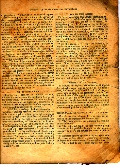
THE THORACIC REGION.
This region is bounded by the dorsal vertebrae,
the ribs, the os sternum, the diaphragm below,
and
the throat above. It embraces the heart
and lungs,
and is the center of the functions of respiration
and
circulation--the two great forces of the organism
on
which depend animal heat, and motion.
If this region be too large, the brain
is overcharged
with blood, partakes partially the nature of
a muscle,
suffers mere physical action, gives out volition
of
muscular motion rather than elevated mental phe-
nomena, sinks in the tone of its sentiments and
intellectual functions, and is subject to the
demands
of the involuntary organs. If the region
be too small,
then the system, with the brain, is poorly nourished,
the blood is not sent efficiently into the distant
or-
gans, the cuticle is dry and ill-odored, the
digestion
is obstructed, and physical and mental imbecility
succeeds. the man is a cypher while living,
and
his life is short. An average or symmetrical
develo-
pment of this region gives a business-like, steady,
strong, and able constitution, a nd supports
the brain
in healthy action.
THE CEPHALIC REGION
the head constitutes this region, containing the
brain proper, the medulla oblongata, the roots of the
cranial nerves, the face, and the blood vessels sup-
plying these parts. In this region the mental phe-
nomena all occur, the great centre of sensation is
located, and the spirit is enthroned. Form this goes
out all the forces of innervation, and here are the
principal muscles of expression. In our design we
mainly consider the cranium, and those organs in its
cavity, and leave the face for analogy in compara-
tive anatomy.
When this region is too large, its functions, as
they depend so much on he other regions for nutr-
tion and growth, are too nervous, rapid, changeable,
and self-exhausting: or form ta size induced by a
normal development, they are languid, imbeciles,
weak, and inefficient. this is an important fact for
the student. A very large head, where the organism
is badly proportioned, is a sure sign of a weak char-
acter. When too small, the mental faculties have
no range nor elevation, the character is small and
made up of little traits and actions. When the head
is in fine symmetry wit the other regions, the mind
is in all cases sufficient for the uses of life; and if
the head be large and the temperament firm, the
character will be equal and harmonious.
REMARKS ON THE REGIONS
In studying the regions, the student must regard
the natural change ever recurring in the female
form, the laws of growth, and the effect of disease.
Dropsy is to be particularly considered. He will find
fine specimens of this organic law in antique statua-
ry, in persons of hs acquaintance; and when once
he has appreciated a beautiful figure, and ascertained
its influence on the character, he will ever afterward
respect its importance, on a phrenological estimate
of the mental qualities and manifestations.
THIRD CLASS OF CONDITIONS TO THIS LAW.
Chronic and acute diseases have an important in-
fluence on the organism and its functions.
1. They both increase and diminish the strength
of the functions.
2. They often act for a long time without giving
symptoms which proclaims their seat; or they appear
suddenly, and level the natural functions in a mo-
ment.
3. Diseases operate spasmodically and systemati-
cally: that is, their effects are shown occasionally,
or appear in a uniform train of abnormal action.
4. They attach to one or more organs, and affect
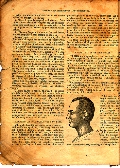
REMARKS ON THE CONDITIONS OF SIZE.
When all these things, temperament, symmetry,
and health, are equal; or, when every part and con-
diton of the body is in complete relation to the func-
tions designed and demanded; then, and then only,
is size a measure of power. This great fact, phre-
nologists urge in estimating the power of the brain
as a whole, and of each of the special organs as a
part. Size, then, cannot be considered absolutely
irrespective of its conditions; and we admit no ar-
gument against us of any avail, unless each and all
of these conditions are fairly included. Yet size is
the great desideratum, and of more importance than
every thing else, unless it be large or small size
resulting from mal-formation. We say this of the
great mass of men, excepting perhaps a few speci-
mens of size from disease, when an organ has lost
its functions from some accident, which, in that par-
ticular instance, can never be made an argument
against the true principles we have advanced.
In these conditions we only express the simple
laws of relation which pervade al nature: alike in
physics and metaphysics; and the same in ever ex-
act or speculative science.
PECULIARITIES OF THE SEXES
We deem a few remarks on the peculiarities of
the sexes important for the design of this work. We
refer to figure 1 and 2, for a male and female
form. A well made man, a line dropped form the
tip of the shoulder will fall outside of the pelvis;
whereas, al line dropped form the tip of the shoulder
of the female, will fall inside of the pelvis. Causal
observation will verify this remark. Hence the stu-
dent will see that the abdominal region is naturally
larger in the female than in the male; while the con-
trary is true of the thoracic.
But these peculiarities are no where more striking
than in the structure of the head so the sexes. Af-
ter studying well figure 1 and 2, we will call the
attention of the student to figure 3, head of the
male, and 4, of the female.
Fig. 3
The male has a
larger forehead, a
deeper, broader oc-
ciput; his head is
broader in the ba-
silar and lateral re-
gions ; higher in
the locality of self-
esteem and firm-
ness. The female
has greater benev-
olence, veneration,
adhesiveness, ap-
probativeness, in-
habitiveness, and
philoprogenitive-
ness; but less ama-
tiveness, combat-
iveness, destruct-
iveness, acquisitive-
ness, constructiveness, causality, and comparison.
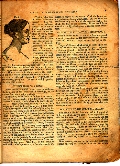
What peculiarities
do their characters
present! The wo-
man loves, endures,
serves; looks up to
the man for protec-
tion and counsel;__
stays at home, rears
the offspring, and
throws over her hus-
band the benign in-
fluence of domestic
happiness and reli-
gion. The man is
born to intellectual
greatness; he ven-
tures out in the rough
world, grapples with
physical danger, en-
gages in he erec-
tion of cities, attempts the rise and fall of
em-
pires, and holds in his hand the scepter of power.
One constitutes the poetry, the other prose of
life. Human nature, in the woman, is the
zephyr
of the vale, which breathes the odor of flower:
in
the man, it is the gales blowing fiercely from
its own
restlessness, going over the ocean, and Jeopardizing
the very bark it urges.
ON MEASURING THE BRAIN.
In this section, we shall make such remarks on
the formation of the brain and its coverings,
as
deemed important to the student.
In foetal life, when the brain is first
seen coming
forward, it is composed of a thin fluid like
substance,
enclosed in a sack, which afterward forms its
me-
ninges. After a while this covering is
distinct, can
be specified, and is found to be first a thin
membrane,
which is strong, fibrous, and smooth, without
any
appearance of bone. Immediately after this
appear-
ance, a periosteum is spread over the last membrane,
on which ossification commences. Now, the
struc-
ture of the brain itself appears somewhat regular,
and its principal parts, such as the ventricles,
poins
cruri, medulla oblongata, the cerebrum and cerebel-
lu, and indeed the anterior, middle, and posterior
lobes, with the hemispheres, ca be designated.
So
that the brain is partially formed before ossification
begins, and its structure progresses much faster
than
that of its body case. The base of the
brain, as
well as that which protects it, is first developed.
Os-
sification begins in the center of all the bones,
on
the peritoneum before mentioned. In this
work we
shall show only the form of the superior part
of the
skull; the base is too intricate, and has too
little to
do with the subject before us, to receive atten-
tion.
DIFFICULTIES IN PRACTICAL PHRENOLOGY.
Frontal Sinus, which is more or less developed
in adults, according to the predominance of the
os-
seaous and muscular temperament--but not in chil-
dren.
Temporal Muscle, which extends itself
upon the
side of the head, covering several organs, rendering
it at times difficult to decide upon their actual
size.
Mastoid Process, situated at the ase of
the skull
behind the ear; when large it prevents a correct
es-
timate of the amount of brain in that region.
Some of the faculties are situated at
the base of
the brain, and their only development being down-
ward, are manifested through the face and neck,
ren-
dering it very difficult, even to a close and
accurate
observer, to determine their size and activity.
There are other slighter difficulties
arising from a
want of a correct estimate of the temperament
and
their combined influence and healthy action,
of a
correct knowledge of the education, circumstances,
habits, and hereditary influences of the person
exam-
ined although the experienced phrenologian can
generally make due allowance.
These conditions render practical phrenology
dif-
ficult but not impossible. They indicate
the neces-
sary care which must be takes if we would study
character correctly. But in passing through
a cab-
inet of skulls, we see in a hundred of them as
great
a variety of form and size, as we do in the forms
and features of a hundred living person who may
accompany us.
DUPLICITY OF THE CEREBRAL ORGANS
The brain is divided form the back to
the front of
it, by a cleft about two inches deep, separating
the
two hemispheres. these are of equal size,
and are
composed of the same elements, and contain similar
organic parts. So that we have two organs
of each
faculty--one each side of the head--as we have
two
eyes for the sense of sight, or two ears for
that of
hearing. The student must not be misled
by the
marked figures, or by our plaster busts sold
in the
shops. These are designed to show the locality
of
the special faculties, as well as the several
cranial
regions.
Now as one eye or ear can be injured or
destroyed
without affecting the other, so also can one
of the

CONDITIONS IN JUDGING OF THE MIND
The Size of the Brain, other conditions
being
equal, is found to be the measure of the aggregate
amount of the mental power; and the relative
size
of the several organs of an individual, indicated
the
proportional strength and energy of his correspond-
ing faculties.
It should however be remembered, that
the amount
of one's mental power, depends even more upon
these "other conditions," such as his organization,
or the vigor of his constitution, the condition
of his
nutritive organs, the state of his health, his
tempera-
ment, the amount of excitement under which his
various faculties act, his education, habits,
diet, &c.,
that upon the size of his brain alone.
Accordingly,
in consequence of different degrees of health,
rest
fatigue, excitement, &c., the manifested
quantity or
amount of a man's mental power will vary twenty,
forty, and even eighty per cent, whilst the kind
or
quality will differ little if any. Hence
both in prov-
ing Phrenology, and also in applying its principles,
the province of the phrenologist is to point
out, rather
than their precise amount--and yet, if he is
informed
as to these "other conditions," (and it is not
only
his right to know them, but preposterous in him
to
pronounce without such knowledge,) he can ascer-
tain very nearly the amount, as well as the kind,
of
intellect and feeling.
The Vital or Nutritive Temperament, imparting
vital power, gives fulness and health to the
body;
manufactures vitality; sustains and prolongs
life;
and re-supplies the brain and muscles with the
animal energy exhausted by their action; giving
restlessness of body, and love of air and exercise.
The different vital organs, however, have their
dis-
tinct influence, and to a certain extent modify
the
action of the others.
The osseous of body structure of the body
has
much to do with the strength of the physical
organi-
zation, it being the frame-work of the body;
and as
much depends upon the size and strength of the
bones, their quality should therefore be recognized
in developing character.
The Muscular or Motive Temperament, upon
which
the mind depends for manifestation, embracing
the
brain and nervous system, gives clearness, activity
and penetration of mind; intensity of feeling;
love
of study; and highly wrought susceptibilities:
also,
quickness, sprightliness of mind, brilliancy
of talent,
general smartness, and a wide awake turn of mind.
Tone and energy of mind depend upon the
health
and vigor of organization.
Excitability of mind, giving impressiveness,
ir-
regularity, and inconsistency of mental action,
is
connected with uneven and sharply developed organs,
and a rapid circulation of the blood.
These several conditions of the body may
be com-
bined in various proportions, thus modifying
mental
manifestations greatly. It requires much
close ob-
servatio and discernment, to be able to decide
with
accuracy in all cases the effect of these combinations
upon the operations of the mind.
CLASSIFICATION OF FACULTIES
Fig. 5
The first natural divi-
sion of the mind is into
Intellect and Feeling--
Intellect giving thought,
reason, judgment, dis-
cernment, knowledge,
memory, system and wit,
is located in the frontal
lobe of the brain, giving
height, width, length,
and prominence to the
forehead.
The Feelings, giving
impulse, executiveness,
appetite, ambition, pride, will, sympathy, love,
and
sentiment, are located in the coronal, occipital,
and
basilar portion of the brain.
The Intellect may be subdivided into reason,
memory, observation, and the senses. The
Feelings,
into social and domestic feelings, selfish propen-
sities, selfish sentiments or aspiring group,
perfec-
tive or semi-intellectual sentiments. and moral
senti-
ments.

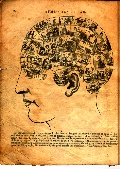
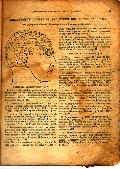
1. AMATIVENESS.-The passion of love and at-
traction between the sexes as such; desire to caress
and fondle. Abuse: Licentiousness and obscenity.
Deficiency: Want of attention, love and regard to
the opposite sex.-p.56.
2. PHILOPROGENITIVENESS.--Parental love; re-
gard for children, pets, and animals, and attention
to their wants. Abuse: Spoiling children by ca-
ressing. Deficiency: Neglect of the young.-p.61
3. ADHESIVENESS.-Friendship; attachment; af-
fection; desire for society, to congregate, to asso-
ciate, and to entertain friends. Abuse: Too great
fondness for company; indiscriminate connections.
Deficiency: Neglect of friends and society.-p.64.
4. INHABITIVENESS.-Love of home; patriotism;
attachment to the place where one lives, or has lived;
desire to locate and remain in one place. Abuse:
want of patriotism; prejudice against other coun-
tries; excessive love of home. Deficiency: Con-
tinually roving.-p.68.
A. MATRIMONY.-Desire to pair; to unite for
life; and to be constantly in the society of, and to
shared with, the loved one. Abuse: Sacrifice
of
other more important considerations. Deficiency:
Want of the conjugal feeling.
5. CONCENTRATIVENESS.-Unity and
continuity
of thought and feeling; disposition to dwell
upon
one subject until it is completed. Abuse:
Pro-
lixity; tedious dwelling upon subjects; inability
to
change subjects of thought and feeling.
Deficiency:
Want of mental concentration.-p.70.
SELFISH PROPENSITIES.-p.46.
F. VITATIVENESS.-Love of life; desire
to exist;
dread of death. Abuse: Extreme tenacity
of life;
over-anxious about health; too great dread of
sick-
ness. Deficiency: recklessness as
to life and
health; unnecessary exposures of health, and
ex-
haustion of vital powers.
6. COMBATIVENESS.-Self-protection;
defense;
personal courage; resistance; boldness; resolution;
the let-me-alone disposition. Abuse: Pugnacity;
a
quick, fiery, ungovernable temperament; a fault-
fiding, contentious disposition. Deficiency:
Want
of courage and disposition to contend for rights.-
p.75.
7. DESTRUCTIVENESS.-Executiveness;
energy;
indignation; hatred; retribution; and a destroying,
pain-causing, exterminating disposition.
Abuse:
Rage; malice; revenge; premeditated cruelty;
murder. Deficiency: Extreme gentleness.-p.82.
8. ALIMENTIVENESS.-Appetite; desire
for nutri-
tion, and enjoyment of food and drink.
Abuse:
Gluttony, gormandizing; drunkenness; habits of
indulging the appetite. Deficiency: Want
of appe-
tite.-p.86.
9. ACQUISITIVENESS.-Desire to acquire
and pos-
sess money, property, &c; to trade; to save
and
take care of property; the mine and thine feeling.
Abuse: Avarice, theft, extreme selfishness.
Defi-
ciency: Profuseness; spending money without dis-
cretion.-p.89.
10. SECRETIVENESS.-Secresy: concealment;
cunning; evasion; policy; management; ability
and disposition to disguise and play the opossum.
Abuse: Hypocrisy; deceit; lying; double dealing.
Deficiency: want of tact; too great frankness.-
p.96.
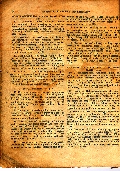
MORAL SENTIMENTS.-p.48.
15. CONSCIENTIOUSNESS.-Sense of moral obliga-
tion; regard for duty; justice; integrity; right;
penitence for sin. Abuse: Self condemnation; ex-
cessive scrupulousness; useless remorse; making
too little allowance for the faults and foibles of oth-
ers. Deficiency: Unprincipled conduct; dishon-
esty.-p. 124.
E. CIRCUMSPECTION.-Discretion; consistency;
uniform; balancing, regulating power , and desire to
harmonize the character. Deficiency: Want of
discretion in word and act.
16. HOPE.-Sense of immortality; of a future
state; a looking for future results, and confidence
in success and happiness. Abuse: Unreasonable
hopes; extravagant plans with reference to the fu-
ture; anticipations that cannot be realized; trusting
to chance without using the proper means. Defi-
ciency: Gloom; despondency; want of confidence
in the future.-p.136.
17.MARVELLOUSNESS.-Faith; belief in Divine
Providence; sense of the omnipresence of God; of
spiritual existence; wonder; surprise; love of the
marvelous and new. Abuse: Belief in ghosts and
witchcraft, and confiding too much in spiritual in-
fluences. Deficiency: Skepticism; rejection of
common evidences.-p.141.
18. VENERATION.-Worship of God; feeling of
devotion and respect; regard for superiority, things
sacred, authority, and antiquity. Abuse: Idolatry;
superstition; worship of unworthy object. Defi-
ciency: Disregard for sacred things; disrespectful;
ireligious.-p.147.
19. BENEVOLENCE.-Kindness; humility; sym-
pathy; pity; disinterestedness of feeling; munifi-
cence; desire to make others happy, and do good.
Abuse: Giving alms to the vicious; so great sym-
pathy and tenderness of feeling, as to be overcome
by the sight of suffering; giving without discretion.
Deficiency: Disregard of the wants, feelings, and
happiness of others; living entirely for one's self.-
p. 153.
PERFECTIVE, OR SEMI-INTELLECTUAL SENTI-
MENTS.-p.48.
20. CONSTRUCTIVENESS.-Contrivance; skill; in-
genuity; desire to use tools and understand ma-
chinery; manual dexterity. Abuse: Wasting time
and money to try experiments; getting out useless
patents; trying to invent perpetual motino. Defi-
ciency: want of contrivance, tact, and skill in the
use of tools, or manual dexterity.-p.160.
21. IDEALITY.-Refinement; delicacy f feeling;
taste; love of perfection in nature, art, and compo-
sition; ecstasy. Abuse: Ideal reveries; sickly
sentimentalism; extravagant love of romance, poetry,
and theatre and imagery, and a disgust for the com-
mon affairs and duties of life. Deficiency: Want
of taste, refinement, and delicacy of feeling, and
regard for the arts and improvement.-p.165.
B. SUBLIMITY.-sense of the vast, grand, sublime,
extravagant, terrific, endless, the wild romantic in
nature, art and composition, particularly natural
scenery. Abuse: Extravagant representations; ex-
cessive fondness for natural scenery. Deficiency
disregard for the sublimites of nature and art.-
p.249.
22. IMITATION.-Power of imitating, copying, and
representing; versatility of action; doing as others
do; describe and act another's part. Abuse: Mim-
icry; copying the faults of others; servile imitation;
taking pattern after others at the experience of origi-
natlity. Deficiency; Want of the ability to conform,
and of proper regard for the manners and customs
of society.-p.169.
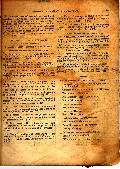
INTELLECTUAL FACULTIES.-p.49.
EXTERNAL SENSES
Sensation: Light: Hearing: Taste: Smell.
OBSERVING AND KNOWING FACULTIES.-p.50.
24. INDIVIDUALITY.-Observation of things, and
power to examine; to identify individual objects; to
be an eyewitness; curiosity.-p.183.
25. FORM.-Recognition of shape, likeness, or
outline; memory of countenance and configuration;
ability to commit to memory-p.186.
26. SIZE.-Perception of bulk, magnitude, and
proportion; ability to judge of length, breadth,
height, angles, perpendiculars, and distances.-
p.190.
27. WEIGHT.-Sense of gravity, and power to ap-
ply its principles to machinery and muscular motion;
shooting; balancing; walking on ice, &c.-p.192.
28. COLOR.-Sense of colors, their different
shades, and harmony in their arrangement in nature
and painting; delight in seeing them.-p.195.
29. ORDER.-Arrangement; system; neatness;
method; desire for convenience and method, and
economy in business operations.-p.198.
30. CALCULATION.-Perception of numbers and
their relations; numerical computation; ability to
reckon figures in the head.-p.202.
31. LOCALITY.-Memory of place, location, direc-
tion; where we have seen persons and things; the
geographical faculty.-p.205.
32. EVENUALITY.-Sense of active events; love
of experiments; desire for knowledge and infor-
mation; fondness for narrations of occurrences.-
p.209.
33. TIME.-Knowledge of chronology; of the
duration and lapse of time; memory of when, and
how long; equality in step, and the beat in music.-
p.214.
34. TUNE.-Perception of sound, melody, and
proper emphasis in reading, speaking, or singing;
ability to compose music.-p.217.
35. LANGUAGE.-Ability to talk; to communicate
ideas; to use appropriate language; versatility of
expressions; memory of words.-p.222.
REFLECTIVE OR REASONING INTELLECT.-p.51.
36. CAUSALITY.-Perception of the causes of
things; the why and wherefore; power of abstract
thought; penetration; planning; originality.-p.231.
37. COMPARISON.-Sense of resemblance; ability
to analyze, classify, compare, infer; critical acu-
men; inductive reason.-p.239.
C. Adaption of causes to their effects; intuitive
perception of results; power to perfect and apply
an argument; ability to so act and speak as to ac-
complish a desired end.-p.248.
D. Capacity to judge of the true motives, charac-
ters, and intentions of others, aside form their ac-
tions; perception of thoughts and desires unex-
pressed; the faculty of like and dislike.-p.247.
-----------
MEASUREMENTS IN INCHES AND TENTHS.
{Circumference around Philoprogenitiveness
and Individuality.
Occipital Spinalis to Individual. over Firmness.
Ear to ear over Firmness.
Philoprogenitiveness to Individuality.
Ear to Individuality.
Ear to comparison.
Ear to Firmness.
Ear to Self-Esteem.
Ear to Philoprogenitiveness.
Destructiveness to Destructiveness.
Cautiousness to Caustiousness.
Acquisitiveness to Acquisitivenss.
Ideality to Ideality.
Constructiveness to Constructiveness.
Self-Esteem to Individuality.
Philoprogenitiveness to Benevolence.
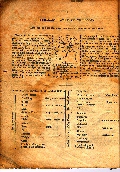
Neurology is the whole science of
man, viewed as dependent upon the
brain and nervous system. This sci-
ence, as now taught, is exclusively of
American origin. It originated in Dr.
Buchanan's discovery of the functions
of the brain, (by exciting the cerebral
organs in the natural state,) which was
published n the spring of 1841. This
discovery has been recognized by the
most eminent Phrenologist. It gives
us an enlarged system of Phrenology
s well as Physiology, and shows that
the organs are arranged on the prin-
ciple of exact antagonism to each
other. The antagonistic regions are
arranged in opposite columns in the
following list.
I Intellectual Region
U-Unintellectual Region.
M-Moral Region.
C-Criminal Region.
H.E-Healthy and Energetic
Region.
M.D-Morbid and Debilitat-
ing Region.
Neurology does not recognize a spe-
cific number of organs, but considers
the division a mere matter of con-
venience for the study of the subject.
It recognizes an almost unlimited di-
visibility of the brain. It teaches that
all the physiological faculties of man
may be controlled through the brain,
to which it ascribes an extensive sys-
tem of physiological powers. These
are not contained in the following list.
It teaches also that every organ or
region of the brain has a correspond-
ing portion of the body with which it
is most intimately associated. The
diagram of the corporeal regions cor-
responds to the diagram of the head.
-----------------
Perceptive Powers
INTELLECTUAL REGION
Consciousness
Sensibility
Touch
Taste
Smell
Sense of Force
Hearing
Light
Shade
Form
Size
Distance
Weight
Color
{Understanding, or per-
ception of phenomena
UNINTELLECTUAL
Sleep, unconscious-
ness, insensibility,
helplessness, and
total absence of
mind.
Recollective Powers{
Memory
Presents Memory
Early Memory
{Historical or
General Memory
Time
Reflective and Combining Powers{
Intuition
foresight
Sagacity
Judgment
Wit
Reason
Ingenuity
Scheming
Imagination
{Spirituality and
Spectral Illusion
Imbecility and
ignorance
Stupidity and folly
Confusion
Barbarism
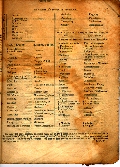
Ideality
{Dreaming and
Optic Illusion
Invention
System
Order
Calculation
Music
Language
-------------
MORAL REGION.
{Integrity or Con-
scientiousness
Love
Humanity
Hope
Philanthropy
Patience
Religion
{Benevolence, Sym-
pathy, Devotedness
Liberality
Faith
Sincerity
Expression
Mirthfulness
Pliability
Imitation
Politeness
Friendship
Admiration
Marvellousness, or Belief
Purity
Modest and Reverence
CRIMINAL REGION.
Baseness
Hatred
Cruelty
Despair, Suicide
Felony
Instability
{Profanity, or
Profligacy
Selfishness
Avarice
Jealousy, Suspicion
Deceit
Secretiveness
Moroseness, Sadness
Stubbornness
{Opposition, or
Contention
Rudeness
Hostility, or Malice
{Censoriousness, or
Slander
Infidelity
Grossness
Vanity, Arrogance
Sublimity
Patriotism
Tranquility
Chastity
REGION OF POWER
AND HEALTH.
Firmness and Decision
Courage, Intrepidity
{Fortitude and
Indifference
Perseverance
Hardihood
Industry
Energy
Temperance
Health
Playfulness
Vigilance
Manliness
Sanity
Restraint
Cautiousness
Acquisitiveness
Coldness
{Adhesiveness and
Love of Approbation
{Ambition and
Love of Power
Pride
Self -Esteem
--------
{Mortality
Nutrition
Vulgarity
Turbulence
Restlessness
Licentiousness
______
REGION OF DEBILITY
AND DISEASE.
Irresolution, Indecision
Fear and Cowardice
{Despondency, and
Anxiety
Fickleness
{sensitiveness, or sense
of pain, Tenderness
Indolence
Relaxation, or Weakness
Alimentiveness
Disease
Sullenness
Somnolence
Childishness
Insanity and Fatuity
Conductor Organs
Rashness, Carelessness
Watchfulness
Ardor or heat
{Aversion or
Repulsiveness
Humility
Servility
Diffidence
_______
{Vitality
Atrophy
_________________________
We insert the above remarks and table made out by Dr. Buchanan, not
because we are convinced as to the correctness of all his location and
arrangement of the faculties, nor are we certain with regard to all the
organs he thinks he has discovered-but that we may have it before us to
aid in making observations and experiments.
L.N.F.
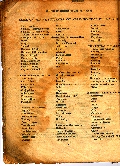
Size of the Brain
Strength of the Nervous System
Strength of the Motive System
includes bones and muscles.
Strength of Vital System
Heart
Lungs
Stomach
Evenness of Organization
Mental Strength
Mental Activity
Mental Excitability
Physical Strength
Mental Activity
Mental Excitability
Physical Strength
Physical Activity
Physical Excitability
DOMESTIC AND SOCIAL FEELINGS.
Amativeness
Love of Pets
Parental Love
Filial Love
Conjugal Love
Adhesiveness
Friendship
Love of Home
Patriotism
SELFISH PROPENSITIES.
Appetite
Bibativeness
Acquisitiveness
Economy
Destructiveness
Executiveness
Retribution
Combativeness
Courage
Secretiveness
Cunning
Evasion
Cautiousness
Fear
Restraint
SELFISH SENT, or ASPIRING GROUP
Continuity
Desire to Command
Self-Esteem
Pride
Ambition
Love of Praise
Display
Firmness
Perseverance
Will
MORAL SENTIMENTS.
Conscientiousness
Justice
Integrity
Circumspection
Industry
Hope
Enjoyment
Sense of Immortality
Veneration
Worship
Deference
Benevolence
Sympathy
Marvellousness
Faith
Spirituality
PERFECTING SENTIMENTS
Sublimity
Love of Scenery
Sense of Refinement
Sense of Perfection
Imagination
Love of Poetry
Imitation
Pliability
Vivacity
Playfulness
Agreeableness
INTELLECTUAL FACULTIES
REASONING ORGAN
Comparison
Inductiveness
Intuitiveness
Causality
Planning
Wit
Invention
Ingenuity
Tune
ORGANS OF RECOLLECTION
Memory of present Events
Memory of past Events
Time
PERCEPTIVE & KNOW. FACULTIES
Observation
Form
Size
Place
Weight
Color
Calculation
Language
Communicativeness
Memory of Names
Light
Consciousness
Order
EXTERNAL SENSES
Hearing, Taste, Smell, Sight,
Sensation
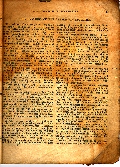
The back part of the head, called occipital, is
exclusively occupied by the organs of the propensi-
ties and selfish sentiments: the remaining portion
is called frontal, and is devoted to the organs
of the sentiments and the intellect. The lower
portion of the head is called basilar, and the por-
tin above it, coronal; the former being allot-
ted to the organs of the selfish propensities and
perceptive faculties, which constitute the principal
faculties possessed by animals; and the latter, to
those of the sentiments and reasoning faculties.
The influence of the various combinations of fac-
ulties upon the character, constitutes one of the
most important features of Phrenology; and in noth-
ing is this influence more manifest, than is those
more general combinations of the various classes
of faculties already mentioned. One in whom the
occipital region, (or the organs of the propensi-
tes and propelling powers,) is much larger than
the frontal region, will have proportionally more of
felling than reason; of passion, than intellect; of
propelling, than directing, power; of efficiency,
than depth and strength of intellect; of mental sail,
than ballast; of zeal, and energy, and action, than
judgment; of the animal, than of the intellectual
and moral, qualities: but when the occipital portion
is smaller than the frontal, the character will be
directly the opposite.
One in whom the basilar region greatly predomi-
nates over the coronal, will possess great force and
efficiency of character; a ready talent for business
and study; and strong passions applied to selfish
purposes, but accompanied with less morality and
elevation of character and feeling; less depth of in-
tellect, with less of the moral, religious, and human
sentiments; and yet, with full Comparison and
Causality, may be capable of conducting and effect-
ing important operations. This portion of the brain
is generally large in men who distinguish themselves
in the world.
One who possesses a much greater development
of the moral and intellectual organs, than of the
propensities, will have goodness with less greatness
or force of character; morality and virtue, joined
wit want of impetus, if not of efficiency; will have
fine talents, and a love for moral and intellectual
pursuits, accompanied with so much modesty and
dependence, if not actual tameness, of character,
that he will not be likely to rise in the world, unless
pushed forward by others, but may then distinguish
3
himself; will be amiable and sentimental, if not
eminently pious, yet effect but little.
This organi
zation is but poorly adapted to the exigencies
of the
nineteenth century.
One having large or very large organs
of the pro-
pensities and of the religious sentiments, and
rea-
soning faculties only moderate or full, may struggle
hard against the current of his propensities,
yet will
be liable to be often overcome by it; may endeavor
to live a virtuous, christian life, yet will
be some-
times guilty of gross inconsistencies, and apt
to take
contracted views of religious subjects, and indulge
alternately, both classes of organs; but, with
the
moral and reasoning organs equally large, will
be
obliged to struggle hard, yet will generally
struggle
successfully, against "his easily besetting sings;"
and, in general, be consistent in his religious
belief
and practice.
One having the propensities well developed,
with
very large moral and intellectual organs, will
com-
bine great strength of mind with great energy
of
character, directed by the human sentiments,
and
applied to the advancement of moral and benevolent
objects and be a talented and useful member of
so-
ciety, yet have many faults.
One with the propensities
and the intellectual
organs large or very large, and the moral deficient,
will combine great power and energy of mind with
great depravity character and never lack means
by which to gratify his selfish passions.
One having some of each class
of organs large or
very large, will present seemingly contradictory
phases of character; will often do what he afterwards
regrets, and be subject to a constant and severe
"warfare between flesh and spirit."
One having
some of each class of organs large or
very large, will present seemingly contradictory
phases of character; will often do what he afterwards
regrets, and be subject to a constant an severe
"warfare between the flesh and the sprit."
One having the perceptive organs generally
large
or very large, and the reasoning full, will
have a mind well stored with facts, and a desire
to
see and know; a thirst for general information,
and
a facility in acquiring it; an ability to attend
to de-
tails and popular, practical, business talent,
but
will lack depth, judgment, originality and penetration
of mind; may execute well, but cannot adapt means
to ends, nor superintend complicated operations;
may possess versatility of talent, be a good
scholar.
and pass for a man of talent and learning, he
will
not think profoundly, nor readily comprehend
first
principles, nor bear sounding.
One with the reflect organs large or very
large,
and the perceptive only moderate or small, or
with
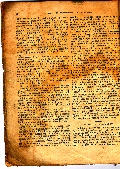
PROOFS OF PHRENOLOGY.
The truth of Phrenology is demonstrated chiefly
by a world of physical facts. The phrenological
phenomena are uniform, throughout the whole hu-
man family, and throughout the whole animal king-
dom. The whole world is challenged not only to
produce a single important exception, but also to
examine the facts in the case. This uniformity
proves the existence of certain phrenological laws
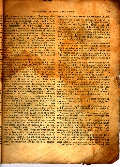
UTILITY OF PHRENOLOGY AND PHYSIOLOGY.
Physiology makes us acquainted with all
the
function of the body, their healthy state of
action,
how to keep them so, and the cause of their de-
rangement; also, the laws of hereditary influence,
and transmission of qualities from parents to
chil-
dren, and the necessity of obeying all the laws
con-
nected with out physical existence, in order
to se-
cure three important designs of our creation,
which
are, life, health, and happiness.
Phrenology unfolds to us the true nature
and
elements of the mind, their adaptation to the
various
conditions, relations, and wants of man.
It furnishes us the data by means of which
we
may become acquainted with ourselves and others.
It enables us to know the true function
of all the
faculties of the mind, and what kind of action
and
exercise they need.
It lays the foundation for a correct system
of edu-
caton. Guided by it, the minds of children
will
receive their true bias, and be educated with
refer-
ence to their real natural powers of mind, so
as to
balance and perfect the character; as well as
to
"train up the child in the way he should go."
It furnishes us a true definition of virtue
and vice.
It give us a true system of mental philosophy
which will harmonize with a true system of moral
philosophy,and both combined will set before
us
the whole duty and obligation of man to his fellow
man and to his Maker-thus furnishing to him a
system of religion harmonizing with the principles
laid down in the BIble, upon which he can rely
with
confidence.
It explains the cause of the great versatility
of
character, talent, opinion, faith, and enjoyment
among men.
It enables us to make proper allowances
for others,
and disposes us to have the right kind of charity
for
those who differ form us.
A correct system of Law, Government, and
Pub-
inshment, can be based upon on other foundation
than
that of Phrenology.
It informs us that law should be adpated
to the
mind, and not mind to law; that government should
exist for the good of all, and not for a few;
that
punishemnt should be inflicted only for the good
and
restoration of the offender, and not to gratify
a re-
vengeful feeling of the punisher.
It will enable us to understand about
how far a
and a certain mental patient can be
trusted and to what kind of tempations he will
be
most liable to yield, and what are his besetting
sins.
It enables us to place ourselves and our
children
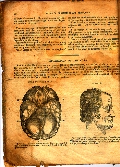
EXPLANATION OF THE CUTS
The folowing Cuts are a corect representation
of the likenesses, andoutlines of the persons whom they indicate, most
of them being taken with care from casts of the head; andso far as we have
been able to ascerain, there is a perfect
correspondence between the developments of their brain, their physiognomy,
and their known characters. Particular refernce is not made to the
location of the organs specified of each individual, but referring to the
Cuts showing the classificaton and location of the organs, each
reader will be able to make his own observations.
BASE OF THE BRAIN
Between A A and B B is the anterior lobe; between
B B
and C C is the middle lobe; between C C and D
D is the
posterior lobe.
DR.GALL
Very large Firmness, Conscientiousness,
Causality, and
Comparison, with a heavy base to his brain, giving
strong
powers of will, moral courage, originality and
clearness of
thought, and energy of character.
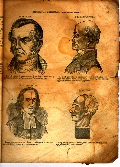
PRES. EDWARDS
Large reasoing, and. very large moral
organs, with a tem
permanet most favorable to their exercise.
DR. C. CALDWELL
A most powerful temperament and constitution-very
large and active brain-very large Firmness, Self-Esteem,
Approbativeness, and reasoning powers.
HENRY CLAY.
Very strong practical talents, with ambition, caution, cour
age, attachment, and kindness.
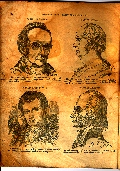
WASHINGTON IRVING
A well balanced head, with a predominance
of Ideality,
Sublimity, Language, Individiuality, and Comparison.
DANIEL WEBSTER
The side view shows very large Amativeness,
Adhesive
ness, Alimentiveness, and Benevolence, with less
Self-Es
teem, Firmness, and Conscientiousness.
FATHER OBERLIN
A well blanced head, with
a predominance of the moral
organs, practical intellect, and domestic feelings.
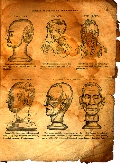
JOHN ORDENAUX
Remarkable for courage and presence of
mind; very large Firmness, Self-Esteem,
Approbativeness and Combaiveness.
CHAUCER
Very strong reasoning organs, Lan
guage, imagination, and poetical tal
ent
JOHN LOCKE.
Very strong reasoning organs, large
Language, and weak imagination and
poetical talent.
VANDOVA-THE FEGEE CHIEF AND CANNIBAL
Very great muscular temperament, very large Self-Esteem, Approative
ness, Firmness, Individuality, large Eventuality, Comparison, Combativeness,
and social feelings, with small Constructiveness, Ideality, Tune, and
Wit.
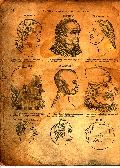
AARON BURR
Very large Amativeness, Self-Esteem,
Firmness, and perceptive intellect.
JACQUES-Committed Suicide
HERSCHELL
Large reasoning, with very large per
ceptive faculties
EUSTACHE
Very large Benevolence and Afffection,
large moral organs and intellect.
GALL.
WASHINGTON
Very large Firm., Self-Esteem, Con
scien. Combat: and perceptive intellect.
CANOVA
Very large intellectual powers, and
large brain.
IDIOT

